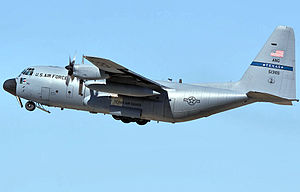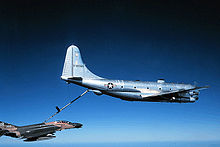
The 180th Airlift Squadron is a unit of the Missouri Air National Guard 139th Airlift Wing located at Rosecrans Air National Guard Base, St. Joseph, Missouri. The 180th is equipped with the C-130H2 Hercules.

The 103rd Airlift Wing is a unit of the Connecticut Air National Guard, stationed at Bradley Air National Guard Base at Bradley International Airport, Windsor Locks, Connecticut. If activated to federal service with the United States Air Force, the 103 AW is operationally-gained by the Air Mobility Command (AMC).

The 182d Fighter Squadron is a unit of the Texas Air National Guard 149th Fighter Wing located at Kelly Field Annex, Joint Base San Antonio, Texas. The 149th is equipped with the F-16C/D Fighting Falcon.

The 136th Airlift Wing is a unit of the Texas Air National Guard, stationed at Naval Air Station Joint Reserve Base Fort Worth, Fort Worth, Texas. If activated to federal service, the wing is gained by the United States Air Force's Air Mobility Command (AMC).
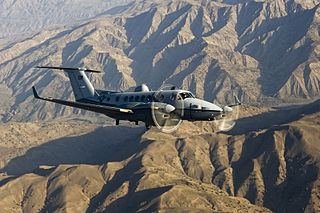
The 137th Special Operations Wing is a unit of the Oklahoma Air National Guard located at Will Rogers Air National Guard Base, Oklahoma. If activated to federal service, the wing is gained by Air Force Special Operations Command. During World War II, its predecessor, the 404th Fighter Group, flying Republic P-47 Thunderbolts, provided close air support to troops following the Operation Overlord, the Normandy landing until the close of the war. The wing is entitled to the honors won by the group by temporary bestowal.
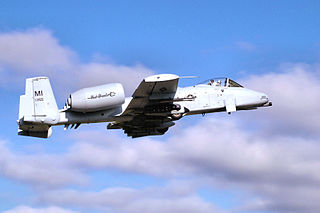
The 127th Operations Group is a unit of the Michigan Air National Guard. It is stationed at Selfridge Air National Guard Base and 1s one of two flying groups assigned to the 127th Wing. The group operates Fairchild Republic A-10 Thunderbolt II ground attack aircraft.

The 359th Fighter Group was a United States Army Air Force fighter unit that was active during World War II. Following organization and training in the United States, the group deployed to the European Theater of Operations, operating from RAF East Wretham. The fighter group flew 346 combat missions over continental Europe and claimed 373 enemy aircraft in aerial combat and strafing attacks; probable destruction of 23; and damage to 185. It was awarded the Distinguished Unit Citation for its actions. The group flew its last mission on 20 April 1945, then returned to the United States for inactivation.

The 136th Attack Squadron is a unit of the New York Air National Guard 107th Attack Wing located at Niagara Falls Joint Air Reserve Station, New York. The 136th is equipped with the MQ-9 Reaper. If activated to federal service, the Wing is gained by the United States Air Force's Air Combat Command.

The 132nd Air Refueling Squadron is a unit of the Maine Air National Guard 101st Air Refueling Wing located at Bangor Air National Guard Base, Bangor, Maine. It is equipped with the KC-135R Stratotanker.
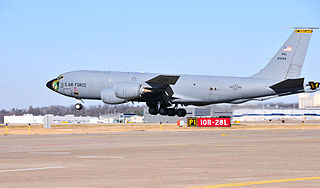
The 147th Air Refueling Squadron is a unit of the Pennsylvania Air National Guard 171st Air Refueling Wing located at Pittsburgh IAP Air Reserve Station, Pennsylvania. The 147th is equipped with the KC-135T Stratotanker.

The 126th Air Refueling Squadron is a unit of the 128th Air Refueling Wing of the Wisconsin Air National Guard stationed at General Mitchell Air National Guard Base, Wisconsin. The 126th is equipped with the KC-135R Stratotanker.

The 185th Special Operations Squadron is a unit of the Oklahoma Air National Guard's 137th Special Operations Wing, located at Will Rogers World Airport, Oklahoma City, Oklahoma. The 185th is the only National Guard unit to be equipped with the MC-12W. The unit is known as the "Sooners". Famous unit alumni include former Vietnam prisoner of war Brig. Gen. James Robinson "Robbie" Risner and Astronaut Captain Fred Wallace Haise Jr., Apollo 13 Lunar Module Pilot.

The 148th Fighter Squadron is a unit of the Arizona Air National Guard 162d Fighter Wing located at Tucson Air National Guard Base, Arizona. The 148th is equipped with the Block 20 F-16A/B Fighting Falcon. The squadron was first organized in England during World War II, moving to North Africa shortly after the invasion. It participated in combat in the Mediterranean Theater of Operations, where it earned a Distinguished Unit Citation. The squadron returned to the United States after V-E Day and was inactivated.

The 78th Fighter Group is an inactive United States Air Force unit. It was last assigned to the 78th Fighter Wing, at Hamilton Air Force Base, California. It was inactivated on 1 February 1961.

The 512th Fighter Squadron is an inactive United States Air Force unit. Its last assignment was with the 86th Fighter Wing at Ramstein Air Base, Germany, where it was inactivated September 1994.

The 172nd Attack Squadron is a unit of the Michigan Air National Guard 110th Wing located at Battle Creek Air National Guard Base, Battle Creek, Michigan. The 172nd is equipped with the MQ-9 Reaper drone.
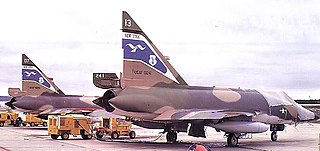
The 106th Fighter-Interceptor Wing is a former unit of the New York Air National Guard, last stationed at Francis S. Gabreski Air National Guard Base, Westhampton Beach, New York.

The 137th Special Operations Group is an associate unit of the Oklahoma Air National Guard stationed at Will Rogers Air National Guard Base. If activated for federal service, the group is gained by Air Force Special Operations Command.

The 107th Attack Wing is a unit of the New York Air National Guard, stationed at Niagara Falls Air Reserve Station, New York. The 107th is equipped with the MQ-9 Reaper. If activated to federal service, the Wing is gained by the United States Air Force's Air Combat Command.

The 136th Operations Group is a component of the 136th Airlift Wing of the Texas Air National Guard. It was first activated in June 1943 as the 368th Fighter Group. After training with Republic P-47 Thunderbolts in the United States, it deployed to the European Theater of Operations, where it began combat operations in March 1944. Shortly after D-Day, the group moved to the continent of Europe, continuing operations until May 1945. The group was awarded the Distinguished Unit Citation and the Belgian Fourragère for its combat operations and being credited with the destruction of 120 enemy aircraft in air to air combat. It served in the occupation forces until the spring of 1946, when it inactivated and transferred its personnel and equipment to another unit.

